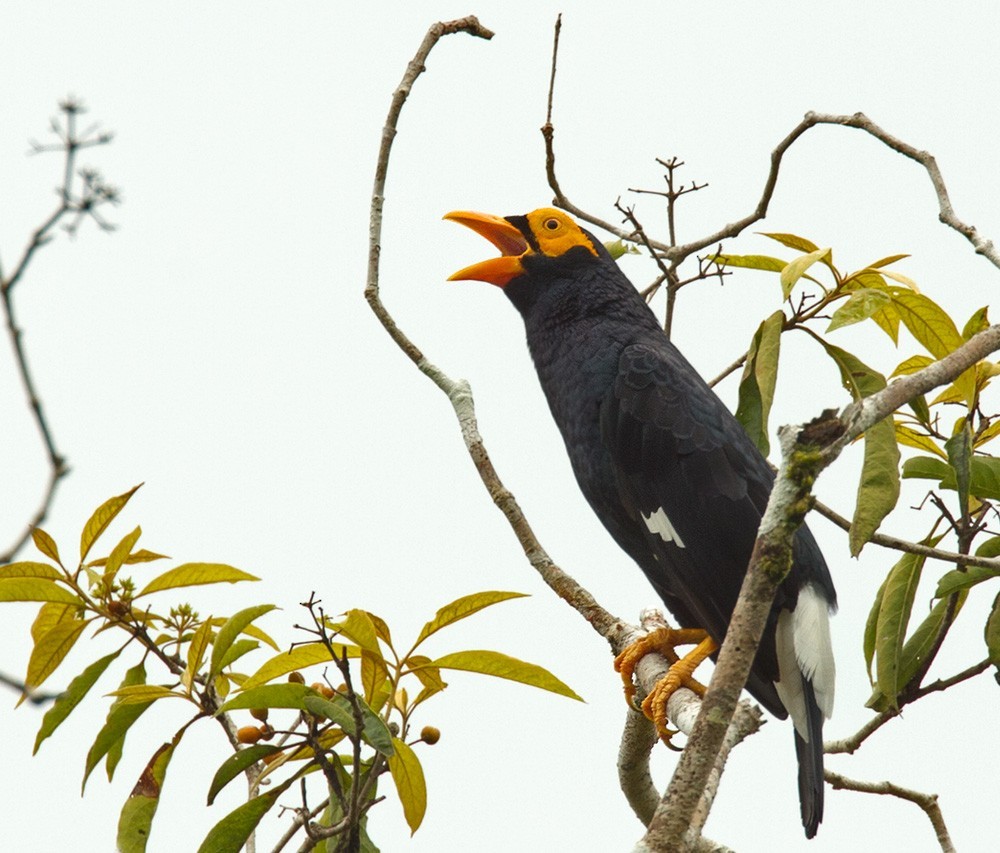Long-tailed Myna
A species of New Guinea Mynas Scientific name : Mino kreffti Genus : New Guinea Mynas
Long-tailed Myna, A species of New Guinea Mynas
Botanical name: Mino kreffti
Genus: New Guinea Mynas
Content
Description General Info
 Photo By Lars Petersson
Photo By Lars Petersson Description
Going on standard measurements and length, this very large myna is one of the largest member of the diverse family Sturnidae, behind only perhaps the Nias hill myna. It measures 29–32 cm (11–13 in) in length. Among standard measurements, the wing chord is 15.4 to 16.8 cm (6.1 to 6.6 in), the tail is 11.2 to 12.1 cm (4.4 to 4.8 in), the culmen is 2.9 to 3.3 cm (1.1 to 1.3 in) and the tarsus is 3.8 to 4.3 cm (1.5 to 1.7 in). No known weights have been reported. These measurements are just slightly larger on average than the closely related yellow-faced myna and indicate the species is around three times as massive as the common starling. The long-tailed myna mainly has purple-glossed black plumage. It has bright orange-yellow patches of naked skin around each eye. It has a yellow lower belly and white wing patches, which are obvious in flight. The rump and undertail are white and the strong bill is bright yellow. 
Size
30 cm
Nest Placement
Tree
Feeding Habits
Long-tailed Myna primarily consume fruit, including soft slices and hard-seeded berries. They forage alone or in pairs, frequently in the canopy, and often perch on exposed branches of trees to feed.
Habitat
The long-tailed Myna typically inhabits forested environments, favoring the edges of forests as well as nearby secondary growth areas, plantations, and forest remnants. These birds are also known to frequent gardens in village vicinities, predominantly occupying regions with a tropical climate across broad geographical areas. Long-tailed Myna are generally found in lowland habitats.
Dite type
Insectivorous
General Info
Feeding Habits
Bird food type
Behavior
The long-tailed myna nests in tree holes, often in palms. The eggs are pale blue with delicate reddish or grey markings. This myna is arboreal, and is found alone or in pairs in open lowland forests and plantations. It feeds mainly on fruits and berries. It is a conspicuous and vocal species with a wide range of whistles and squawks. 

 Photo By Lars Petersson
Photo By Lars Petersson Scientific Classification
Phylum
Chordates Class
Birds Order
Perching birds Family
Starlings Genus
New Guinea Mynas Species
Long-tailed Myna